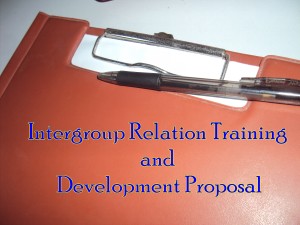Project Title: Computerized Hotel Reservation System
Programming Language: Visual Basic 6.0
Database : MS SQL SERVER
Project Location: JC Mer Hotel, Tarlac City
I. Introduction
The purpose of this document is to propose a computerized hotel reservation system at JC Mer Hotel.
The computerized hotel reservation system deals with reservation inquiry, single reservation, and group reservation, cancel reservation and recall reservation. During reservation, the details of the customers, type of room required, and number of room required are fed in to the system. Once these in formations are entered, the system searches for the unoccupied rooms and displays the result. In reservation inquiry, customer can get the information such as rent of rooms and details of rooms available.
Hotel operation will be easy for the receptionist since all data and information will store in the database and it can access anytime. The main operations figured out in a hotel include check in and check out of customers and room reservation.
A. Background of the Study
JC Mer Hotel is a 50-room standard hotel situated along Capitol Drive in the Heart of the City of Tarlac. The hotel is using a traditional way of reserving a room. The receptionist uses the log book to know if there is room vacancy. Through the use of computerized hotel reservation system, the receptionist makes her work easier. The receptionist will easily locate the vacant room and assigned it to the client or customer.
B. Objectives
1. General Objective
– to develop a computerized hotel reservation system
2. Specific Objectives
– to design a computerized hotel reservation system
– to make work easier for the receptionist of the hotel
II. Methodology
1. Requirement Gathering
The gathering of the requirement is the first step to develop a system program. In order to know the requirement, the project proponent interviews the hotel personnel regarding the hotel reservation data processes.
2. System Analysis
The project proponent used a data flow diagram as a system analysis tool. Data flow diagram (DFD) is a graphical representation of the “flow” of data through an information system. It shows the flow of data from external entities into the system, showed how the data moved from one process to another, as well as its logical storage.
3. Program Development
The computerized hotel reservation system will be developed using Visual Basic ver. 6.0. The database to be used is MS sql server.
4. Implementation
The system will be installed and implemented at the reception area of the hotel.
III. Personnel
The computerized hotel reservation system will be used by the receptionist of JC Mer Hotel.
IV. Duration
Schedule of Activities
1. Data Gathering – 14 days
2. Data and System Analysis – 7 days
3. System Design – 10 days
4. Form Design – 14 days
5. Program Coding – 24 days
6. Program Debugging – 14 days
7. Program Testing – 10 days
8. Personnel Training – 3 days
9. System Implementation
V. Cost
Computer – P 25, 000.00
Software Licensure – P 10,000.00
Personnel Training – P 2,000.00
Documentation – P 1,000.00
Labor Cost – P 26,000.00
Miscellaneous Expense – P 1,000.00
Total Project Cost – P 65,000.00
VI. Conclusion
The computerized hotel reservation system will be benefited to both customer and hotel management. The hotel management will keep track of all transactions and improve customer retention. Also the staff or receptionist is free up to spend more time looking after the in-house guests.
VII. Appendix
A Books
B. Internet
– http://www.articlesbase.com/management-articles/taking-advantage-of-hotel-reservation-software-476518.html
– http://www.codeguru.com/vb/
